I was struck, at the recent Redwood Empire Bonsai Society’s 27th annual show, how the trunk of each bonsai set the tone for the rest of the tree. The roots, branches, and foliage each take their cue from the trunk, and if there is too big a difference in quality between any one of these elements and the trunk, the bonsai is less effective.
For a species that can grow up to 380′, Coast redwoods can make surprisingly compelling bonsai. They typically feature massive trunks with lots of deadwood. I’ve always thought of this as a result more of a general bonsai aesthetic than a representation of how the trees typically grow – tall and thin in this case. But like other species that make good collected bonsai, redwood can show a lot of character in the trunk.

Coast redwood – foliage surrounding deadwood on the trunk
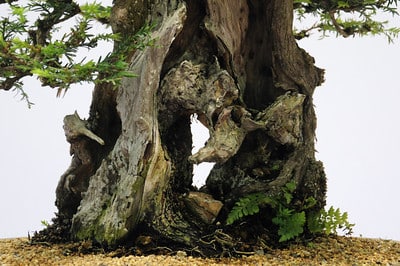
Deadwood at the base of the trunk
After looking at these details, seeing the entire tree doesn’t surprise me much, although it looks a bit more massive than I’d expect, likely due to the tree’s slow taper.
Another redwood at the show demonstrates bonsai’s potential for tree art, if there is such a thing.
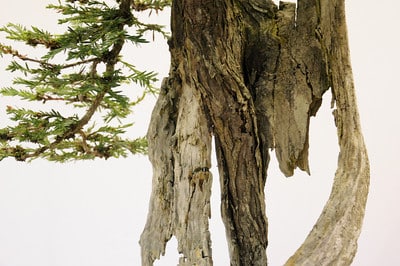
Coast redwood – trunk detail
Does the complete tree meet or break expectations after looking at a slice of the trunk?
Some varieties reveal themselves completely in the trunk. This pomegranate is a good example of this.
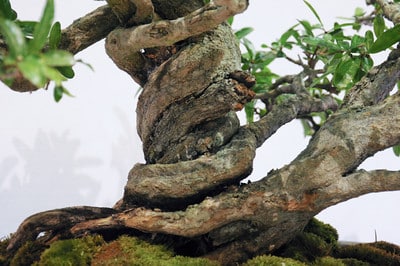
Pomegranate – trunk detail
Kaede, or trident maple, is another easily recognizable variety. The roots and subtle taper on the maple below are both good characteristics.
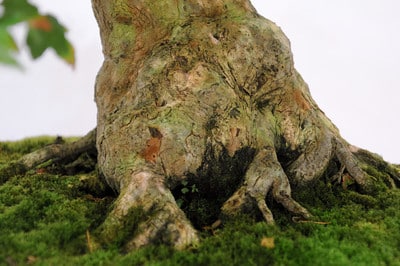
Trident maple – trunk detail
Other kaede in the show were far more massive. Can you get a sense of what the rest of this maple looks like?
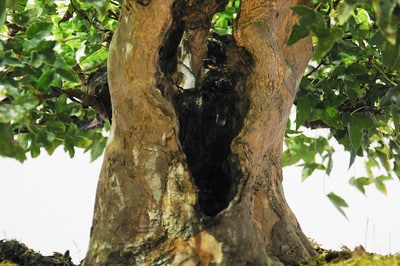
Trident maple – trunk detail
I could ask the same of the following trident maple. When the shape of the trunk breaks from our most standard idea of how a variety grows, it’s harder, but not impossible, to guess how the rest of tree looks. Our general sense of trunk to silhouette ratio can help here.
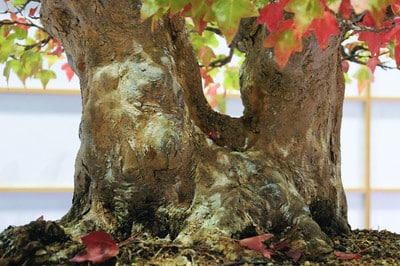
Trident maple – trunk detail
Some trunks are simply fun to enjoy.
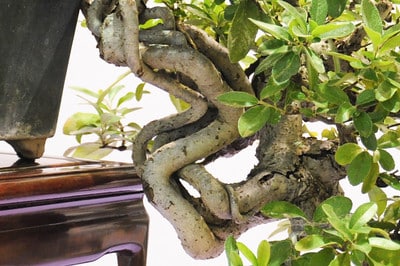
Cascade pyracantha – trunk detail
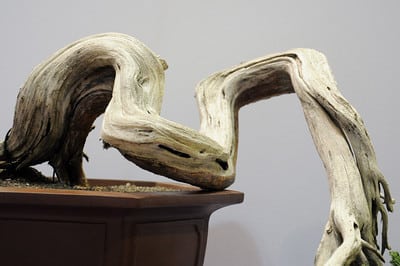
Cascade procumbens juniper – trunk detail
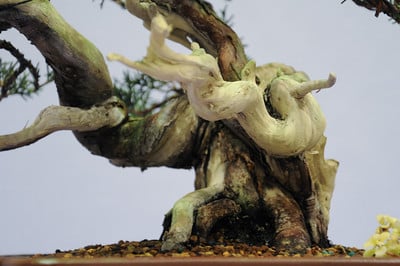
Shimpaku
The cork oak below appears to have a large and straight trunk with some deadwood – all masculine characteristics. The bark reveals the variety clearly.
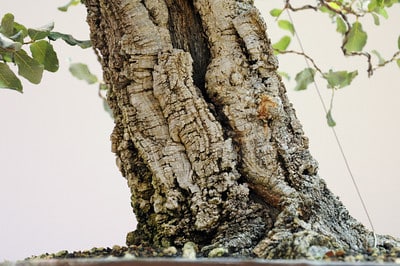
Cork oak – trunk detail
Taken as a whole, however, the tree offers a very different, and somewhat more feminine character.
Another oak in the show had very fast taper. The rounded branches and roots shown here almost resemble those of some ficus bonsai. Both varieties are good at evoking the massive specimens found in nature.
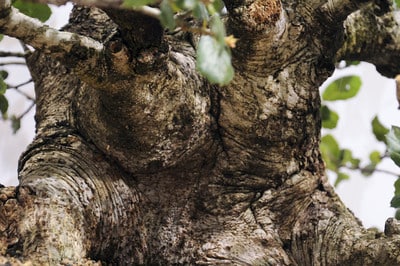
California live oak – trunk detail
Pine bonsai are known for their bark. There were some great examples at this year’s show, including one of my favorites, the Japanese black pine donated to the GSBF Collection North by Mas Imazumi. It’s simply one of the best pines around here.
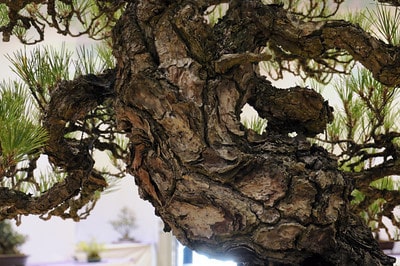
Turtle-back bark – Japanese black pine
The pine below has great lichens growing at its base.
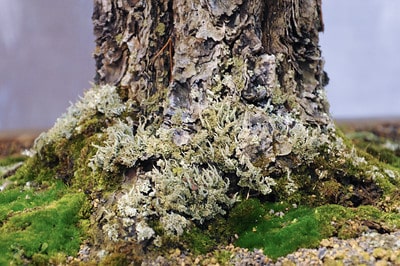
Lichen growing on the nebari
Can you tell from the trunk and first branch which way this tree points?
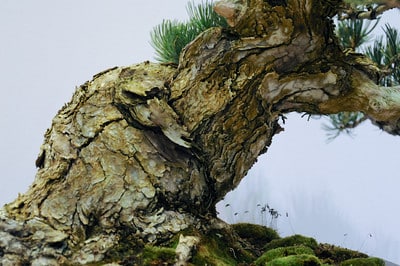
Good movement and taper – Japanese five needle pine
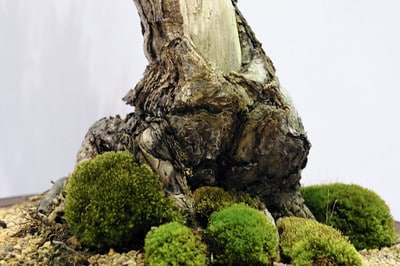
Shari near the base of the tree
I didn’t catch the variety of the tree below, but it looks like a Chinese elm. From the photo, it’s hard to even tell if the tree is alive. I find the character here very interesting.
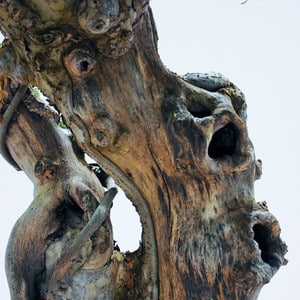
Trunk detail
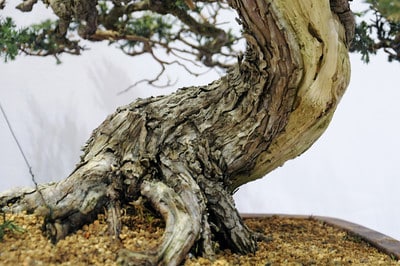
Juniper – trunk detail
After looking at the maple below I was surprised to see how large the tree is – another example of how good trees can work at different scales.
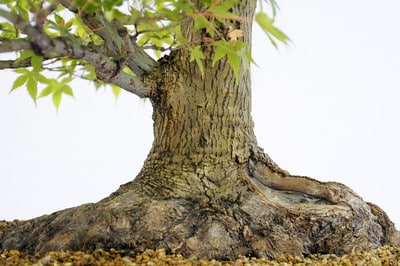
Maple – trunk detail
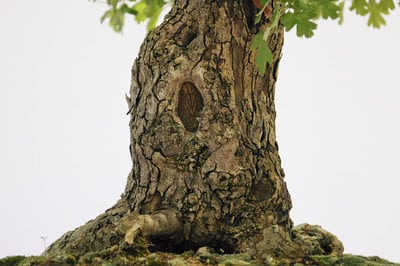
Hawthorne – trunk detail
Age is the characteristic that stands out to me here. Cedar bark breaks when the tree gets old.
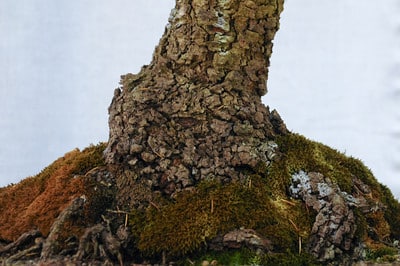
Cedar – trunk detail
After looking at these trees closely I want to go out and look at my own trees – I’m curious what their trunks will reveal.
Subscribe to Bonsai Tonight
New Posts Delivered Every Tuesday and Friday